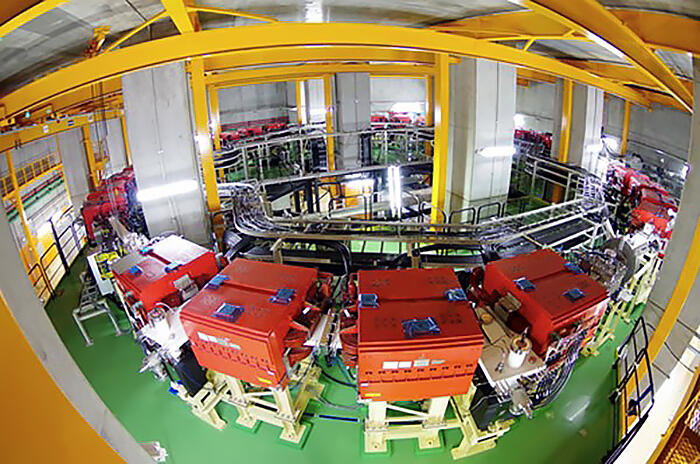An international joint research group consisting of researcher Sarah Naimi (at the time of the research), Hongfu Li, an International Program Associate (at the time of the research), and Group Director Tomohiro Uesaka of the Spin-Isospin Laboratory in the RIKEN Nishina Center for Accelerator-Based Science; Yoshitaka Yamaguchi, a technical scientist of the Rare RI-Ring Team; Professor Akira Ozawa of the Faculty of Pure and Applied Sciences, University of Tsukuba; Associate Professor Takayuki Yamaguchi of the Graduate School of Science and Engineering, Saitama University; Research Associate Shin'ichiro Michimasa of the Graduate School of Science, The University of Tokyo and their colleagues has succeeded for the first time in using a rare-RI ring created at the RI Beam Factory to accurately determine the mass of the nucleus of neutron-rich palladium-123 (atomic number 46, neutron number 77), which is a radioactive isotope (RI), through a newly established ultra-high-speed mass measurement technique. Although there is a theoretical hypothesis that elements heavier than iron are formed through the rapid neutron capture process (r-process), this is not accurately understood. The outcomes of this research will open the way for researchers to accurately determine the mass of many rare-RI associated with the r-process. The results were published in the online version of Physical Review Letters.

Courtesy of RIKEN
The RI Beam Factory is the first accelerator facility in the world to succeed in forming r-process nuclei in large quantities, but it was difficult to measure the mass of rare-RI. This is because the conventional method of measurement takes several seconds to finish, but the life of an r-process nucleus is a fraction of a second. For example, in the case of palladium, palladium-118, with a life of 1.9 seconds, was the measurement limit.
In this research, the international group realized the world's fastest and most accurate mass determination by combining the rare-RI ring, which is characterized by an isochronous circulation time, with an individual injection technique that injected RI into the ring one-by-one as they were identified, and then deriving the mass from the difference (deviation) in arrival time based on the type of particle after having the particles fly in the ring for around 0.7 milliseconds.
Using this method, the group verified that it is possible to measure the mass of the palladium-123 nucleus and the surrounding nuclei in a timeframe that is less than its lifespan. As a result, it is now clear that the elemental ratios of mass numbers 122 and 123, which are observed in the solar system, can be properly explained.
Group Director Uesaka commented, 'This measurement of palladium-123 was a demonstration. We know that from just being able to determine the mass of one nucleus that our understanding of heavy element synthesis in space will greatly advance in the future. The demonstration indicated that the ultra-high-speed mass measurement technique using the rare-RI ring is exceptionally effective for extremely short-lived r-process nuclei. In excess of several hundred types of isotope are involved in the r-process, and their nature is vital to understanding the origins of heavy elements in space. This ultra-high-speed mass measurement technique established by the research group will open up a new era of rare isotope mass measurement at the RI Beam Factory. Over the next 5-10 years, we want to determine the masses of the key nuclei in the r-process.'
This article has been translated by JST with permission from The Science News Ltd.(https://sci-news.co.jp/). Unauthorized reproduction of the article and photographs is prohibited.




